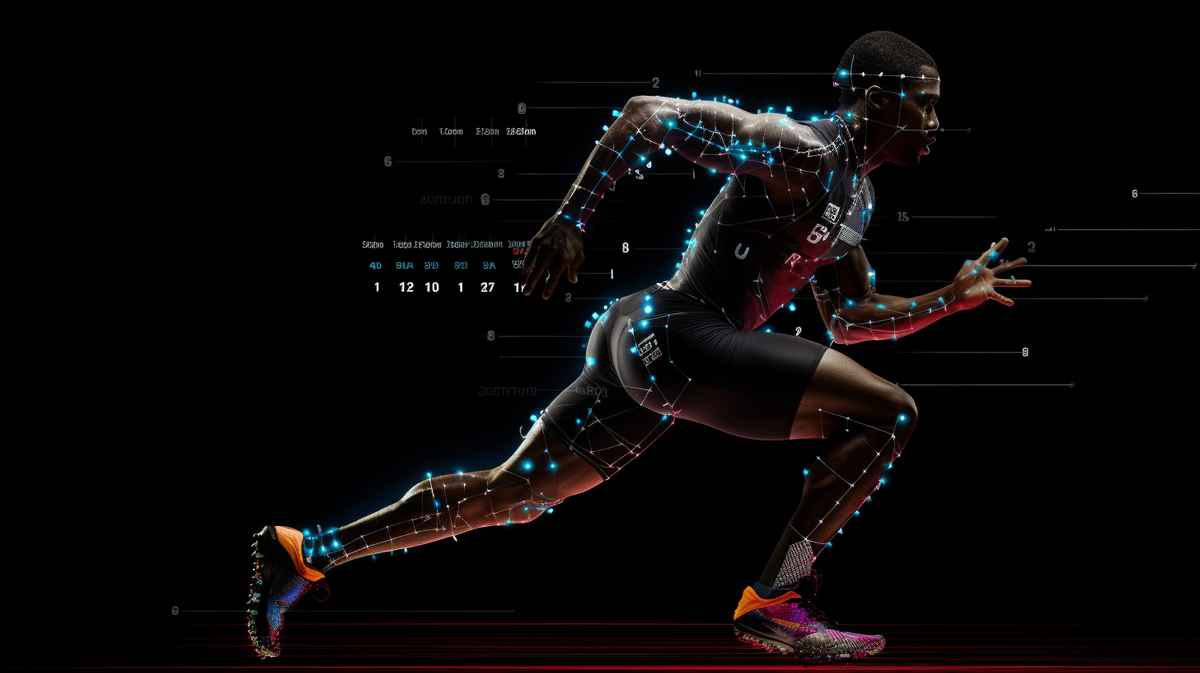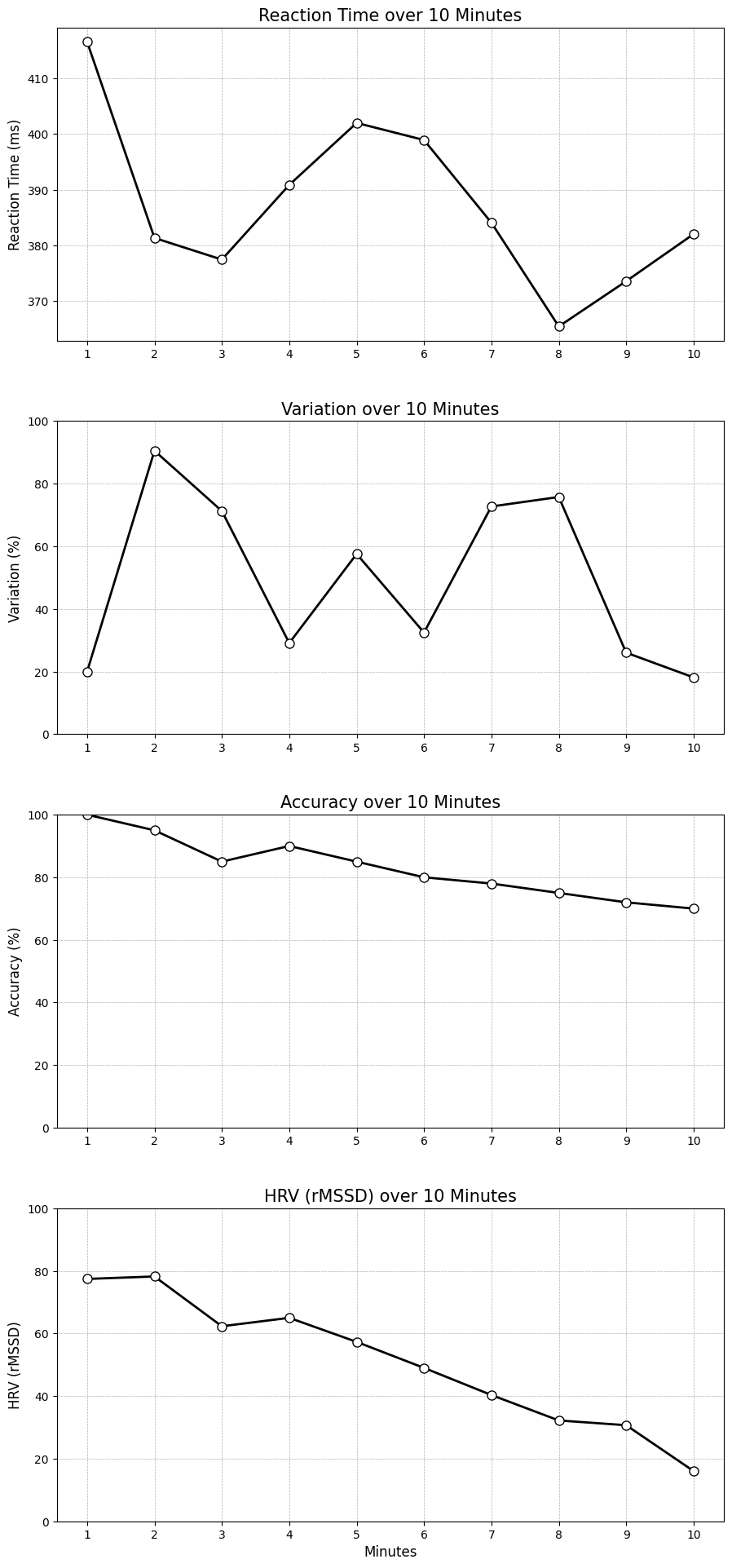The Granular Power of Minute-on-Minute (MoM) Monitoring
In the high-stakes arena of sports, every second counts. Just as an athlete's heart rate zones provide real-time insights into their physical exertion and recovery, understanding their cognitive performance on a minute-by-minute basis is paramount.

In the high-stakes arena of sports, every second counts. Just as an athlete's heart rate zones provide real-time insights into their physical exertion and recovery, understanding their cognitive performance on a minute-by-minute basis is paramount. It's not just about how fast they run, but how quickly they think; not just about their physical endurance, but their mental resilience. Enter Minute on Minute (MoM) monitoring. This innovative approach is to cognitive performance what heart rate monitoring is to physical training. By tracking multiple metrics every single minute, MoM offers a granular view of an athlete's cognitive landscape, allowing coaches and trainers to harness the full spectrum of their athlete's potential.
Demystifying Minute on Minute (MoM) Monitoring
In the realm of sports science, data is king. But not all data is created equal. While traditional methods focus on broad metrics, there's a growing recognition of the power of granularity. Minute on Minute (MoM) monitoring epitomizes this shift.
What is MoM Monitoring?
At its core, MoM monitoring is a precise method of tracking an athlete's cognitive and physiological measures during a cognitive task. Instead of merely capturing an average or an end-point metric, MoM dives deep, recording data at every minute interval. This continuous stream of information paints a vivid picture of an athlete's performance trajectory, from the initial stages of a task to its conclusion.
Imagine watching a movie in fast-forward versus real-time. While the former gives you a general idea, the latter offers nuances, critical moments, and a richer understanding. That's the difference MoM brings to the table.
The Multifaceted Benefits of MoM Monitoring
Harnessing the power of MoM monitoring is akin to unlocking a treasure trove of insights. But what makes it such a game-changer in the world of sports performance management? Let's delve into the myriad benefits it offers:
1. Cognitive Stress Adaptation:
MoM monitoring acts as a window into an athlete's cognitive stress levels. By observing how these levels fluctuate during a task, coaches can glean insights into an athlete's adaptability and resilience. This knowledge empowers them to tailor training programs for optimal stress management and peak performance.
2. Unwavering Focus on Consistency:
Consistency is the hallmark of a champion. Through MoM data, coaches can assess the uniformity of an athlete's performance. By identifying patterns or anomalies, they can pinpoint areas for improvement, ensuring a steady upward trajectory in performance.
3. Early Detection of Cognitive and Physiological Thresholds:
Every athlete has a breaking point. MoM monitoring helps identify that critical juncture when an athlete's performance starts to wane. With this data in hand, trainers can make timely interventions, tweaking the regimen to prevent dips and maintain performance levels.
4. A Panoramic View of the Grand Mean:
Beyond the minute-by-minute data, MoM also captures the grand mean, offering a complete view of an athlete's performance. This broader perspective is invaluable, shedding light on the nuances of performance and facilitating data-driven decisions.
Decoding the MoM Data Calculation
Understanding the benefits of MoM monitoring is just one part of the equation. To truly harness its potential, one must grasp the underlying mechanics of how MoM data is calculated. Let's break it down:
The Twin Pillars: Grand Mean (GM) and Mean of Minute Means (MoM)
- Grand Mean (GM): This metric represents the average of all individual trial responses. Think of it as the overarching average that provides a bird's eye view of an athlete's performance across a task.
- Mean of Minute Means (MoM): As the name suggests, this is the unweighted average of the mean values for each minute. It offers a more segmented view, capturing the ebb and flow of an athlete's performance throughout the task.
When the minute means are derived from the same number of trials, the MoM and GM align perfectly. However, any divergence between these two metrics can indicate variability in the athlete's performance. This variability is crucial as it can shed light on the athlete's adaptability, consistency, and areas that might need attention.
MoM Monitoring: A Deep Dive into Data
The true power of MoM monitoring lies in the wealth of data it offers. By tracking multiple metrics minute by minute, coaches and trainers can gain a comprehensive understanding of an athlete's cognitive performance. Here's a closer look at the key metrics:
1. Reaction Time:
A fundamental metric, reaction time measures how swiftly an athlete responds to stimuli. While it's a vital measure, it's also variable, making it essential to view it in conjunction with other metrics for a holistic understanding.
2. Speed:
By normalizing the data distribution, the speed metric offers a clearer pattern of an athlete's performance. It diminishes the impact of outliers, ensuring a more accurate representation of an athlete's capabilities.
3. Variation:
Variation, or the coefficient of variation, gauges the consistency in an athlete's performance. A lower variation indicates higher consistency, making it a pivotal metric for tracking cognitive performance improvements.
4. Accuracy:
Accuracy assesses the correctness of an athlete's responses. By analyzing MoM data trends, one can determine the consistency of an athlete's performance throughout a task.
5. RCS (Responses per Second):
RCS stands out as it considers both speed and accuracy. A high RCS score signifies that the athlete is responding quickly and correctly, while a low score might indicate slower responses or errors.
6. BPM (Beats Per Minute):
This physiological metric monitors the athlete's heart rate, providing insights into their physical stress levels during a cognitive task.
7. rMSSD:
Representing the variation in time between heartbeats, rMSSD is a crucial metric for understanding an athlete's adaptability to cognitive load.
8. SDNN:
This metric measures the standard deviation of the time between heartbeats, offering another layer of insight into an athlete's physiological response to cognitive tasks.
Minute on Minute Data
With minute-on-minute data, deeper insights into performance can be gleaned. For instance, in the graphs below, you can observe that the reaction time was stable over the 10 minutes of the task. However, the athlete's consistency, as depicted by the variation, was somewhat erratic. This inconsistency, paired with the declining accuracy over the 10-minute period, suggests potential areas of concern. Additionally, the decline in the athlete's HRV is indicative of increasing physiological stress or fatigue.

MoM monitoring unravels the deeper layers of performance and pinpoints both cognitive and physiological breaking points. Consider it a lens into the athlete's "cognitive engine." Without MoM monitoring, pinpointing these cognitive or physiological thresholds would be nearly impossible.
For instance, an athlete might exhibit stellar reaction times and low variation but perform poorly in terms of accuracy. This could hint at their quick processing speed but a potential lapse in decision-making or focus. On the flip side, average reaction times coupled with low variation might indicate an athlete's consistency but suggest a need for improvement in their processing speed. Additionally, physiological metrics like HRV could reveal if an athlete's training regime is perhaps too strenuous, which might be why their in-game performance is suffering.
In essence, MoM offers insights like never before, allowing coaches and trainers to tailor their approach based on detailed, minute-by-minute performance metrics.
🌐 Connect With Us
🌍 Soma Technologies: Engineered to enhance human performance.
📸 Instagram: Dive into our world through exclusive photos and stories.
👥 Facebook: Join our community for the latest updates and discussions.
📈 LinkedIn: Connect with us professionally and stay informed about industry news.
🎥 YouTube: Watch our latest videos, tutorials.
🐦 X: Follow us for instant updates, news, and engaging tweets.
